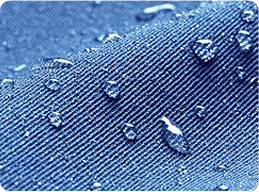What is the need of Textile Chemical Processing?
In Textile Chemical Processing the chemical
treatments are given to the fabric after being manufactured. Actually the fabric
coming from the loom is not having properties like absorbency, softness etc and
the most important is that the appearance of the fabric is dirty or pale
yellow; we cannot use it directly for making apparels or clothing. So, it is
necessary to go for chemical processing of the material to make it wearable.
Impurities
in Gray Fabric
There
are three types of impurities present in the gray fabric
·
Natural
Impurities
·
Added
Impurities
·
In-process
Impurities
Natural Impurities: natural
impurities are the impurities related to the chemical composition of the
fibres. Different fibres have different type of natural impurities. Some of the
natural impurities present in a gray fabric are:
Waxes, pectins, pigments, colloid
substances, colours etc. These impurities mask the absorbency of fabrics.
Added Impurities: These are the
impurities deliberately added for improvement of certain properties during
weaving operations. Some of these are: Gums, PVA (Poly vinyl alcohol), starch,
fatty compounds, softeners or lubricants etc.
In-process Impurities: these
impurities are produced in the gray fabric during processes. The various
in-process impurities are: Oil sticks/stains, lubricant marks, leaf material
(found in natural fibres), Broken cotton seeds called kitties (found in cotton
fabric) etc.
Chemical Composition
of Cotton
Cotton is a
cellulosic fibre it has cellulose as major component:
Constituent
|
Proportion
|
Cellulose
|
88-96%
|
Proteins
|
1.0-1.9%
|
Waxes
|
0.4-1.2%
|
Pectins
|
0.3-1.0%
|
Ash
(inorganic matter)
|
0.7-1.6%
|
Others
(resins, pigments, hemi-cellulose, sugars, dust-dirt)
|
0.5-0.8%
|




0 Comments